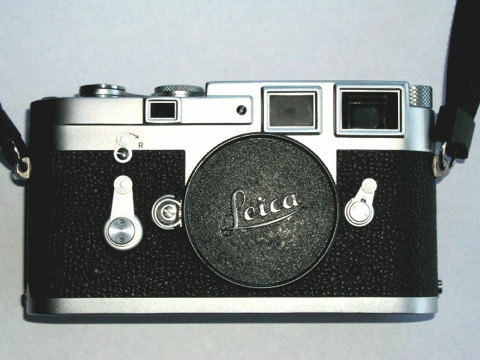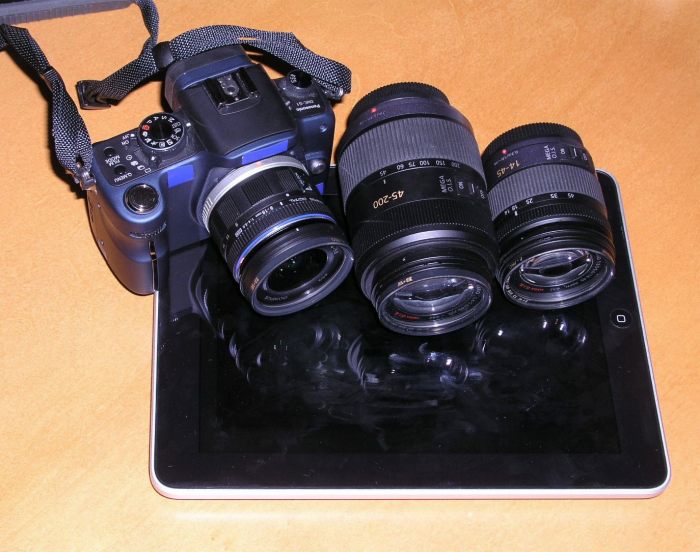Never lower.
Selling off my Canon 5D outfit gave me pause to reflect on the cost of photography gear. While it’s not something I pay much attention to, my ‘investment’ in hardware has, for many years, been less than zero. That is largely attributable to selling off my Leica equipment a few years back, most of it bought before the lunatic increases in second hand values seen in the late 1990s. Most items sold for at least twice what I had paid, some of the older ones for five times my cost. So even after splashing out on my 5D, a bunch of lenses and the HP DJ90 printer, I was well ahead of the game. While I denigrate the collector mentality which saw my Leica gear rise so greatly in value, living free is not so bad either.

My Leica M3. That was then ….
In 1971, when I got serious about street snapping and bought my first Leica, a used M3, a new M4 could be had for some $940, complete with the greatest 50mm lens ever made, the f/2 Summicron. If film is your thing you cannot improve on this combination forty years later. Today a new digital M9 with a similar optic will run you $9,000, or $10,000 with the even more street-suitable 35mm lens. That’s an annual compounded inflation rate of almost 6%. By contrast, the US CPI has an annualized increase of 4.5% over the same period, which makes Leica’s price inflation look reasonable. Stated differently, that M4 + lens, inflated at the US CPI rate, would cost you $5,200 today. Yet, when someone tells you that a modern M9 + lens runs you the price of a good used car you blanch and look elsewhere.
The M9 is a far more capable body than any of its predecessors and for the over-and-above-inflation price increase you get a full frame digital sensor, a ‘motor drive’ as there’s no film to advance, aperture-priority exposure automation, extremely high ISO capability, a thousand shots a roll and instant gratification. All missing from that M4 of yesteryear. That’s a lot of value added for the incremental $4,000 or so over an M4 at today’s prices. And you still get that dumb-as-it-gets removable baseplate.
Yet why do so few serious photographers buy it? The reason is simple. It’s not that the M9, in some abstracted sense, ‘seems’ expensive. It’s that everything else is so much cheaper. And if you take function and flexibility into account, the single-use Leica (street snaps only, please) pales when compared to like priced modern megacomputers in the guise of the big Canons and Nikons. Indeed, for just a few hundred dollars you have a choice of any number of DSLRs from the likes of Nikon, Canon, Pentax, Samsung, Olympus, Sony and Panasonic which will outperform that M9 in every respect – speed, automation, flexibility and so on – while yielding results indistinguishable in quality from the Leica’s to all except those who have shelled out the price of entry for the latter. The Leica has migrated from tool to fetish.
I’m thinking about this as I contemplate what to do with all the excess proceeds from my 5D sales. My little G1 outfit with 9-18, 14-45 and 45-200mm lenses, which ran me all of $1,650, can deliver 13″ x 19″ prints with ease, 18″ x 24″ if I try a little harder. I tried the 20mm f/1.7 pancake and returned this poor optic one day after purchase. It was, arguably, a luxury purchase, meaning I really did not need it, but I had all that cash burning a hole in my pocket, so blowing $400 of it on a toy seemed the thing to do.
Panny lists a 45mm Macro with Leica branding (right, pull the other leg) which helps them justify $800 for the lens. But my macro days are over. Been there, done that.

…. this is now. G1 and friends.
There’s also a tempting Panny fisheye lens which may entice me should I get the hankering to do QTVRs again, but the 9-18mm Oly satisfies my ultrawide needs for now.
On the software front simplification has also been the order of the day. Lightroom and Photoshop CS5 are a powerful team for just about everything I need, absent QTVRs. Panoramas, perspective correction, selective blurring, you name it. Plus LR’s superb cataloging and keywording. So no way to blow some cash there.
And when it comes to heat mounting my big prints, the old Seal press has about a thousand years left on it and the last I checked, they do still make them like that.
I guess I’ll just invest the excess, setting $1100 aside for the Fuji X100. Now that is one piece of gear I very much do not want to have to return for credit.
Meanwhile, there’s nothing to it. I simply have to take my dirt cheap gear and go make some more pictures.